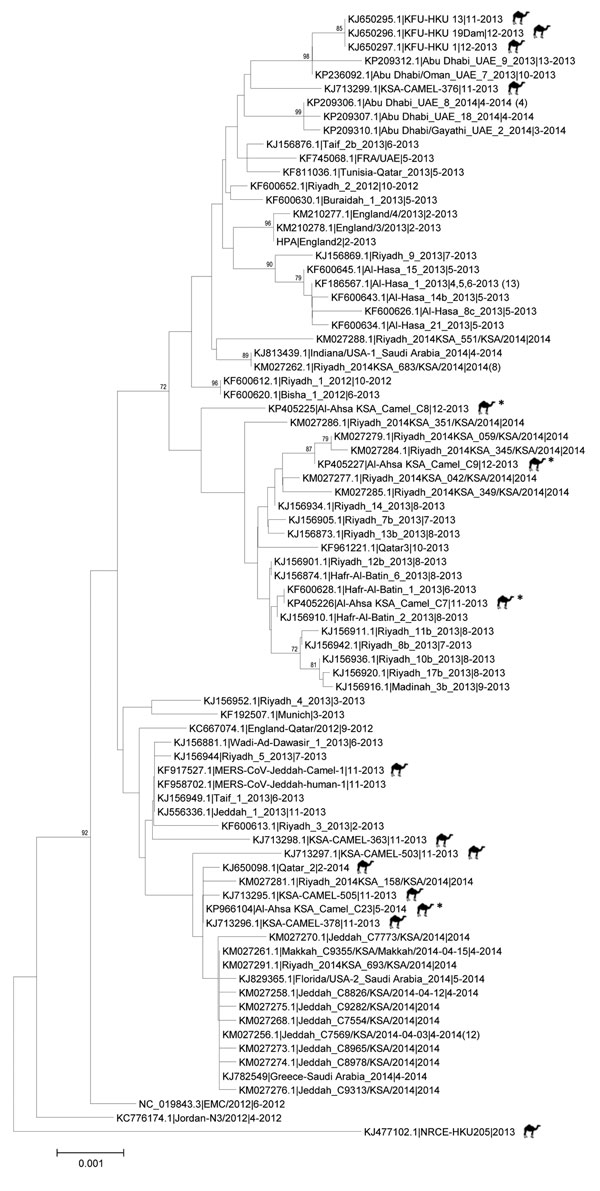Volume 21, Number 7—July 2015
Research
MERS-CoV in Upper Respiratory Tract and Lungs of Dromedary Camels, Saudi Arabia, 2013–2014
Figure 2

Figure 2. Midpoint-rooted phylogenetic tree of Middle East respiratory syndrome coronavirus spike gene open reading frame sequences of this virus obtained from camels and select humans (sequences available from GenBank). The estimated neighbor-joining tree was constructed from nucleotide alignments by using MEGA version 6.06 (http://www.megasoftware.net). Sequence names are derived from GenBank accession number | virus strain name | month-year of collection. Numbers in parentheses denote number of additional available identical spike gene sequences obtained from same identified region of the representative strains. Bootstrap support values (1,000 replicates) >70% are plotted at the indicated internal branch nodes. Scale bars indicate number of nucleotide substitutions per site. Sequences obtained from camels are designated by an icon; sequences obtained from camels in Al-Ahsa Province, Saudi Arabia, 2013–2014, are designated by an asterisk (*).